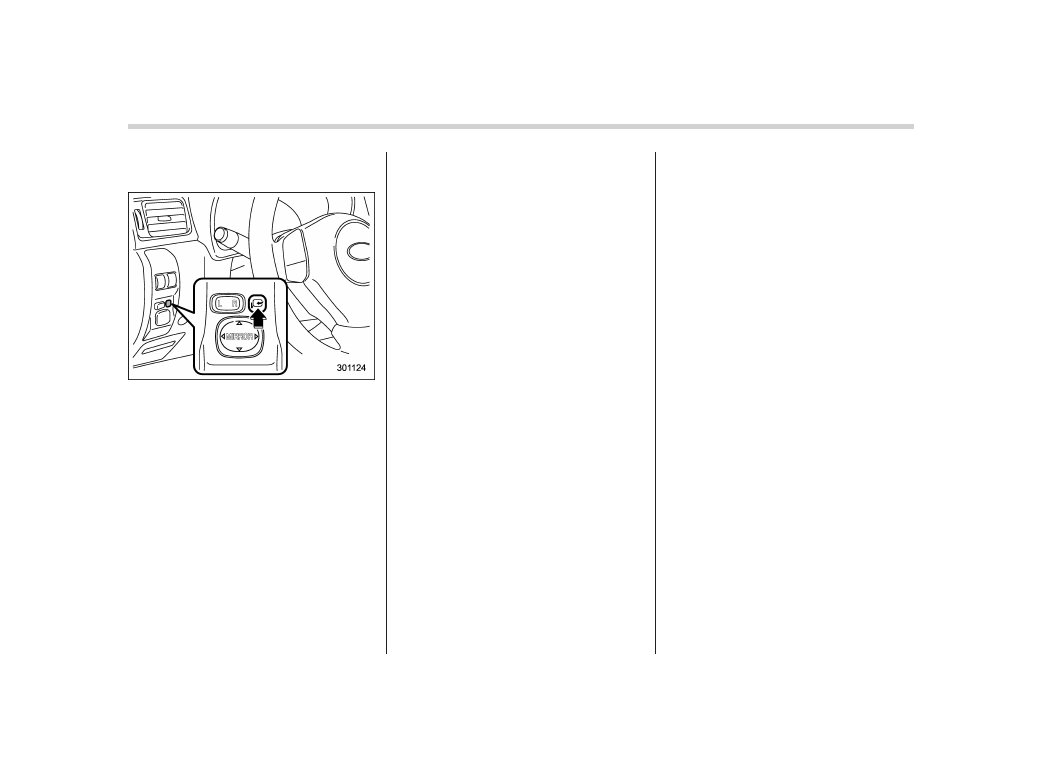Subaru Impreza WRX (2014 year). Instruction - part 11

3-46
Instruments and controls/Mirrors
!
Power folding mirror switch (if
equipped)
The power folding mirror switch operates
only when the ignition switch is in the “ON”
or “Acc” position.
To fold the outside mirrors, push the power
folding mirror switch. To unfold the mirrors,
push the switch again.
NOTE
. If the outside mirrors have been
operated (folded or unfolded) manually,
when you turn the ignition switch from
the “LOCK/OFF” position to the “Acc”
or “ON” position, the outside mirrors
may be adjusted automatically depend-
ing on the status of the power folding
mirror switch.
. If the outside mirrors have been
manually folded slightly forward of the
regularly unfolded position, when you
turn the ignition switch from the
“LOCK/OFF” position to the “Acc” or
“ON” position, the outside mirrors may
automatically fold further forward de-
pending on the status of the power
folding mirror switch. When this hap-
pens, press the power folding mirror
switch. By doing so, the outside mir-
rors which have been folded to the
furthest forward position will extend to
the regularly unfolded position and
then fold rearward in the usual way. In
order to unfold the outside mirrors,
press the switch again.
. When you unfold the outside mirrors
manually, the mirrors may become
wobbly. Be sure to unfold the mirrors
by switch operation. If the outside
mirrors are still wobbly, fold the mirrors
again and then unfold them by switch
operation.
. When the temperature is low, the
outside mirrors may stop during switch
operation. If that occurs, push the
switch again. When the outside mirrors
do not work by switch operation, move
them several times manually. This
makes it possible to operate them by
switch operation.
. When you operate the power folding
mirror switch continuously, it may not
work. This is not a malfunction. Oper-
ate the switch again after waiting for a
short period of time.